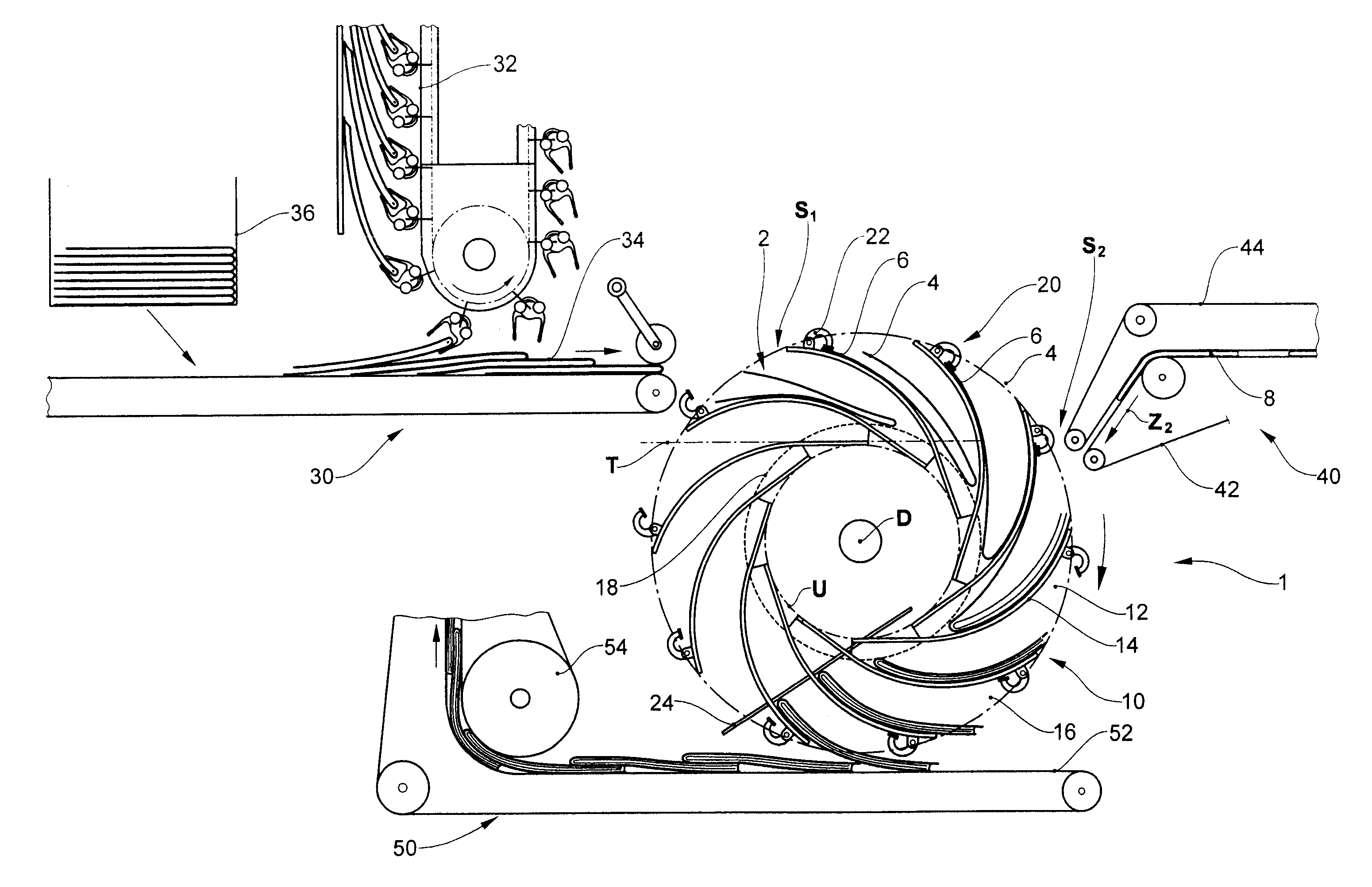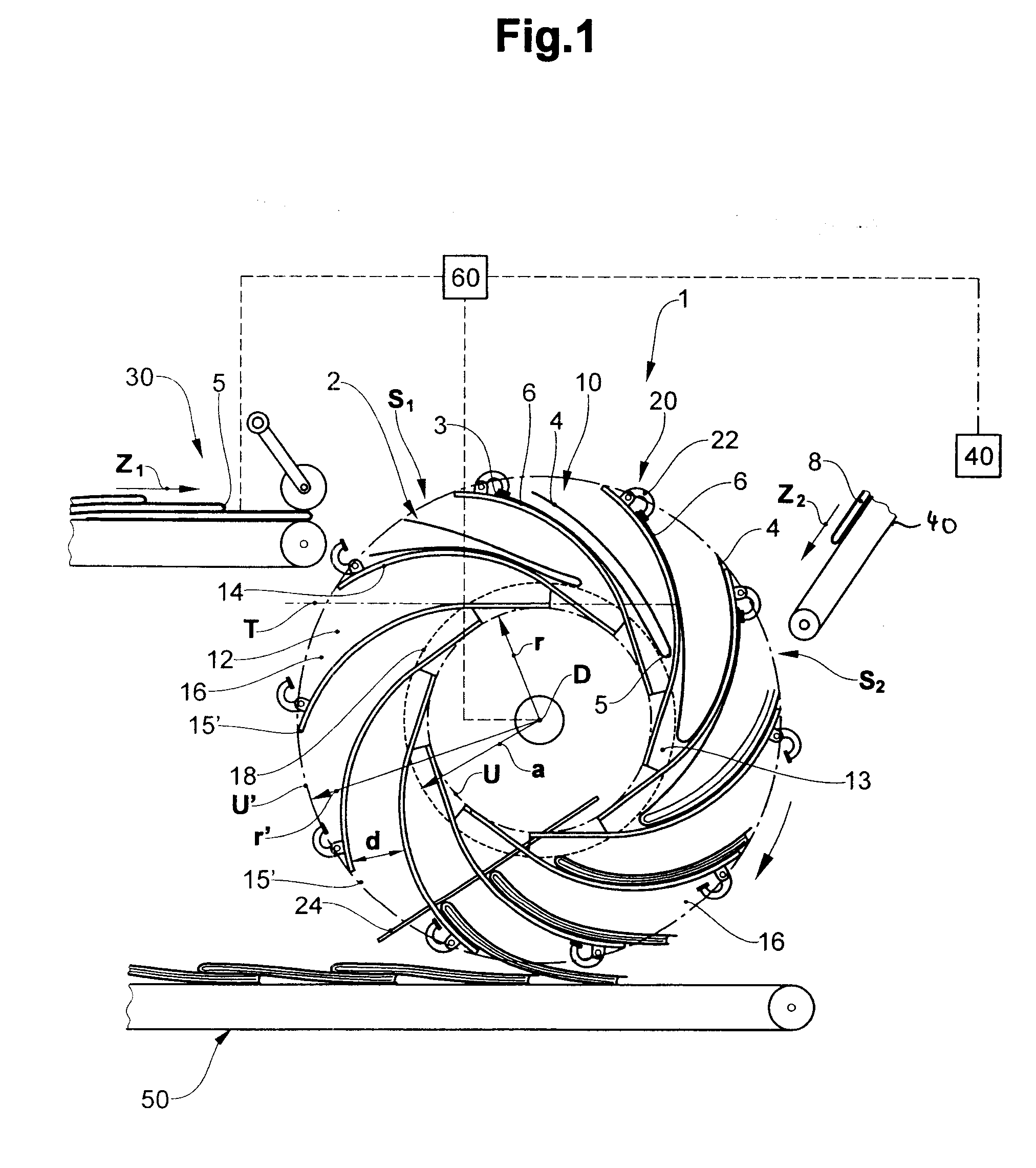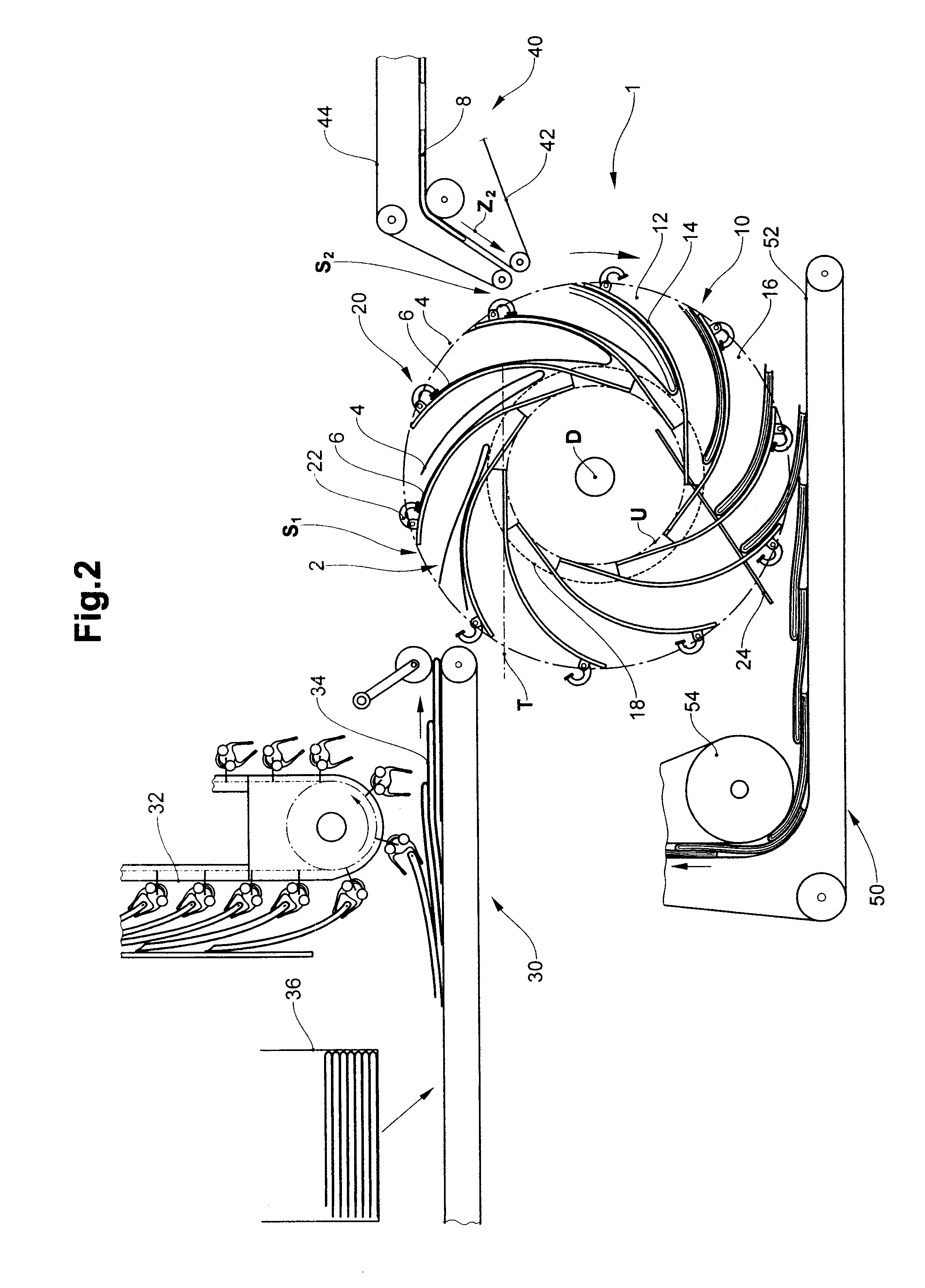Insertion apparatus and insertion method
a technology of insertion apparatus and insertion method, which is applied in the directions of document inserters, pile separation, printing, etc., can solve the problems of unfavorable loading, large acceleration of products during insertion into compartments, and a large variation of spacing between the two dividing walls, so as to facilitate the opening of products and reduce the space requirement (diameter of the apparatus)
- Summary
- Abstract
- Description
- Claims
- Application Information
AI Technical Summary
Benefits of technology
Problems solved by technology
Method used
Image
Examples
Embodiment Construction
[0026]FIG. 1 shows an inserting apparatus 1 with a circulating system 10 which comprises a plurality of compartments 12. In each case one compartment 12 is formed by two adjacent dividing walls 14. The dividing walls 14 have a continuous 2-dimensional surface or define a 2-dimensional surface. They are mounted on at least one rotational body (not shown here) so as to rotate about a rotational axis D. The dividing walls 14 define receiving pockets for products, which receiving pockets taper from the periphery of the circulating system 10 or the compartment opening 16 toward the compartment base 13.
[0027]As a result of the rotation about the rotational axis D which extends horizontally here, the compartments 12 describe a circular circulating track U with a radius r. In the present case, the circulating track U is denoted by the track of that dividing-wall end 15 which lies at the smallest distance r from the rotational axis D (r>0). If the track of another point on the dividing wall ...
PUM
| Property | Measurement | Unit |
|---|---|---|
| Force | aaaaa | aaaaa |
| Angle | aaaaa | aaaaa |
| Distance | aaaaa | aaaaa |
Abstract
Description
Claims
Application Information
 Login to View More
Login to View More - R&D
- Intellectual Property
- Life Sciences
- Materials
- Tech Scout
- Unparalleled Data Quality
- Higher Quality Content
- 60% Fewer Hallucinations
Browse by: Latest US Patents, China's latest patents, Technical Efficacy Thesaurus, Application Domain, Technology Topic, Popular Technical Reports.
© 2025 PatSnap. All rights reserved.Legal|Privacy policy|Modern Slavery Act Transparency Statement|Sitemap|About US| Contact US: help@patsnap.com



